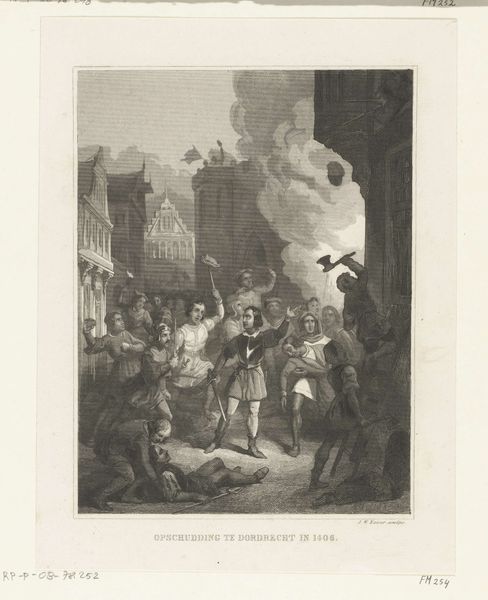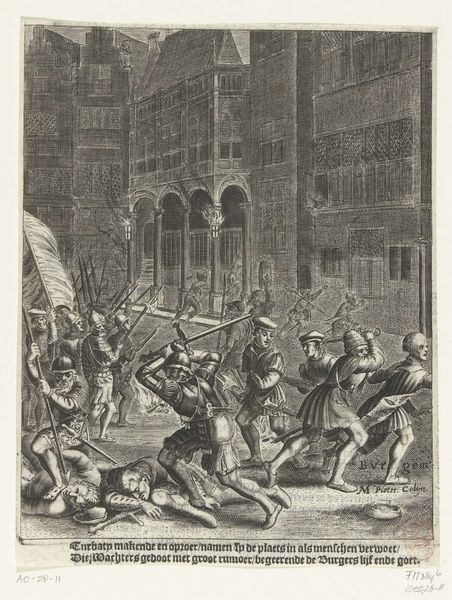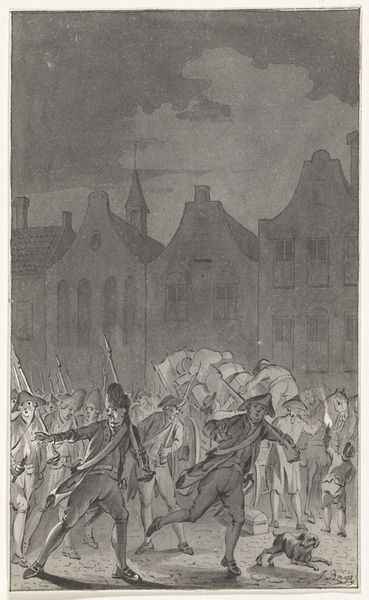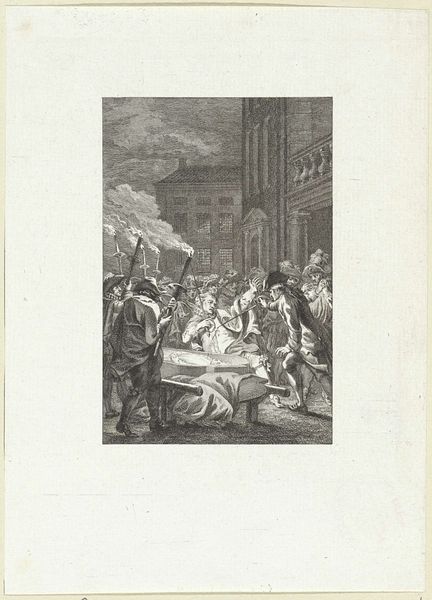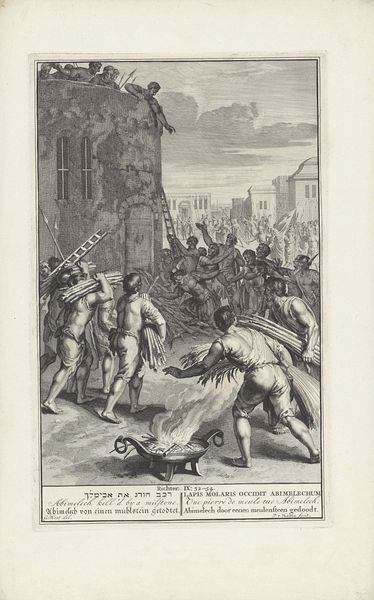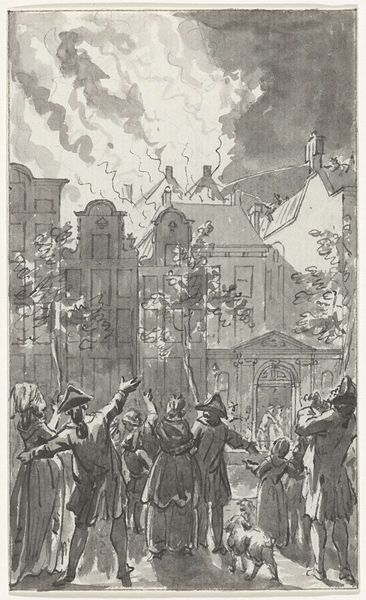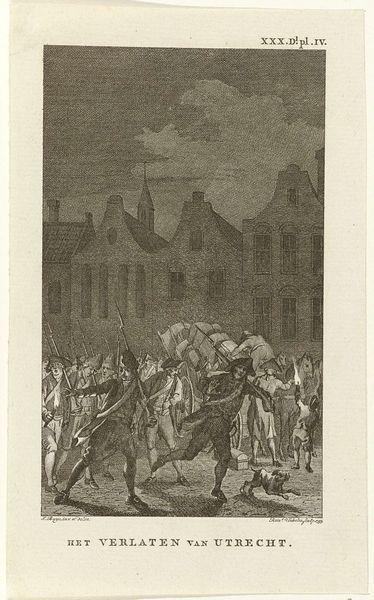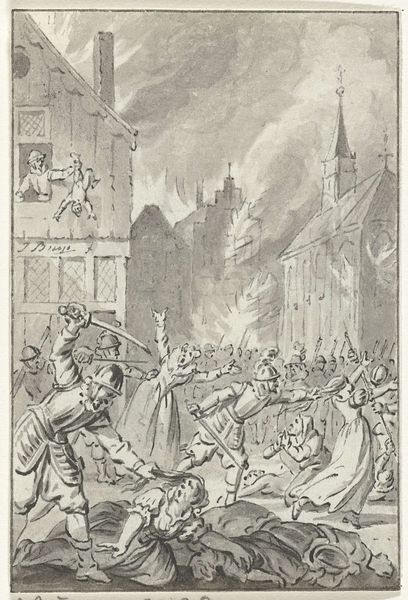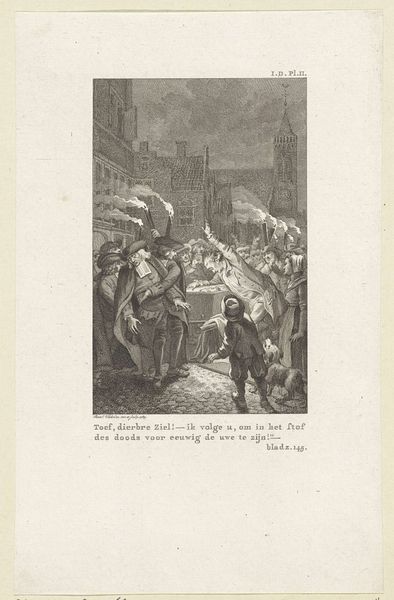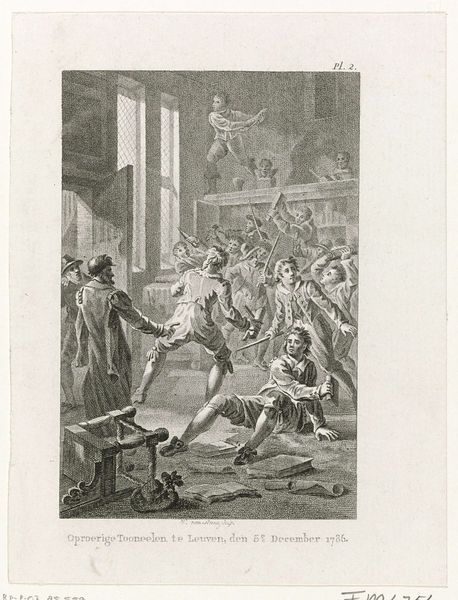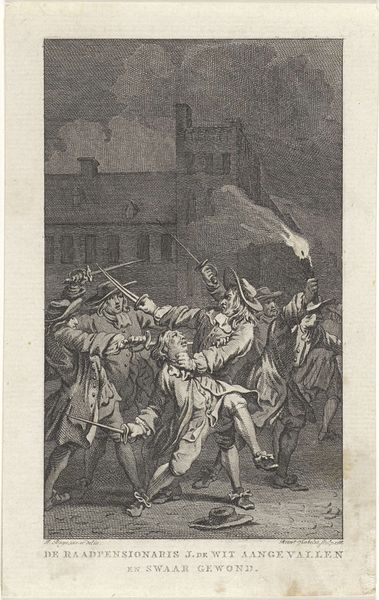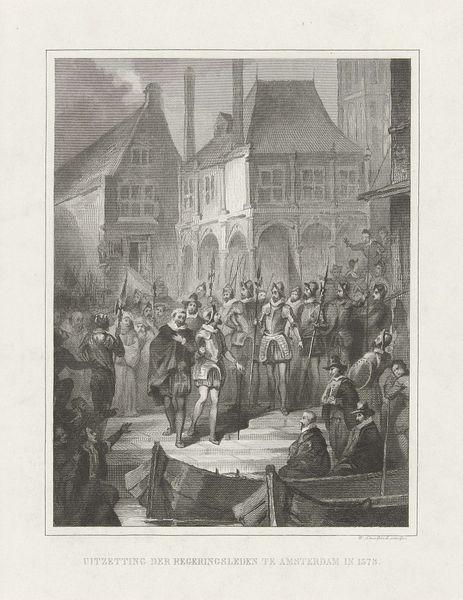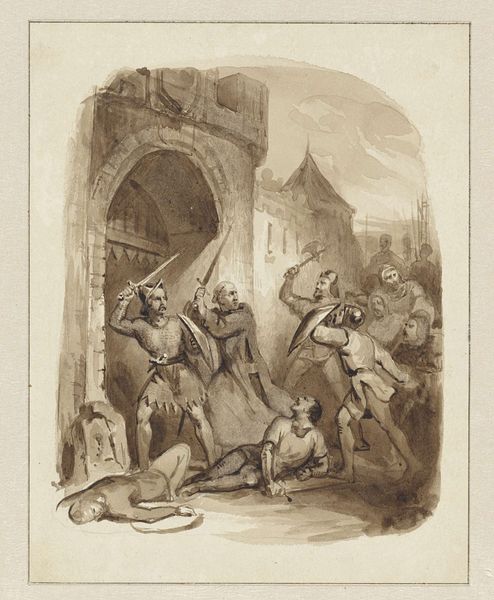
print, etching, engraving
#
narrative-art
# print
#
etching
#
cityscape
#
history-painting
#
engraving
#
realism
Dimensions: height 241 mm, width 175 mm
Copyright: Rijks Museum: Open Domain
Curator: Let’s discuss "Franse Furie te Antwerpen, 1583", an engraving and etching created between 1853 and 1855 by Jan Frederik Christiaan Reckleben. It resides here at the Rijksmuseum. What strikes you immediately about this print? Editor: Well, it's quite graphic. Even in the somewhat detached style of an engraving, the chaos and violence are palpable. There's a sense of immediate danger, figures fleeing, fighting, or already fallen. The energy of the scene practically leaps off the paper. Curator: Indeed. This work illustrates the "French Fury" in Antwerp, a significant event during the Eighty Years' War when Spanish soldiers, mutinying over unpaid wages, rampaged through the city. Reckleben, though working centuries later, draws on earlier depictions of the event. Editor: It's fascinating how these historical traumas get represented and re-represented over time. I wonder how Reckleben’s 19th-century audience would have interpreted this scene of brutality and occupation? Were they drawing parallels to their own political landscape, to other forms of oppression? The image is ripe for intersectional analysis when thinking about power dynamics across time. Curator: That’s a crucial point. Artworks like these certainly helped shape the narrative of national identity and collective memory. The “French Fury” became a potent symbol of foreign aggression and the struggle for Dutch independence. Editor: It also begs the question of whose stories get told, and from what perspective. The artist clearly chose to depict the suffering of the Antwerp citizens, yet history is complex. The motives of the Spanish soldiers are no doubt missing from this visual representation of the story, painting them merely as villainous figures. Curator: True. The artist, like many of his contemporaries, was invested in creating emotionally resonant depictions of Dutch history, which often meant highlighting particular aspects while eliding others. The level of detail in the buildings in the background helps immerse the viewer, as if you’re truly standing witness to this grim scene. Editor: And I find it compelling to think about who created this image, the materials used, and where and when, and for what viewership? Reckleben may have tapped into something so very central about the narrative and legacy that conflict has on people across different times, or even societies. Curator: Precisely, looking at artworks through that lens provides much richer, more critical experience. Editor: I agree, it urges us to question who benefits from the story this print conveys, and what nuances we risk losing in this representation.
Comments
No comments
Be the first to comment and join the conversation on the ultimate creative platform.
